Kraków 2017-06-07
Aviation training in Poland. 1970-1990.
Student protests in 1968, followed by the events on the Coast in 1970; did not change the aviation training system. The actions of the new party authorities aroused a positive attitude in most of the society. The new head of the Polish United Workers' Party, Edward Gierek (a former miner), inspired some confidence.
The 70/80-years is the period of stabilization of the aviation training system in Poland. Military schools have been adapted to the general education system. Graduating from an officer school or an officer school was equal to graduating from civil studies. The difference between an officer school ... and an officer school ... was that the graduates of the first schools had the same profession and title as civil studies. On the other hand, the graduates of the latter had a profession specific to the country's defense. However, regardless of the school, the career officer was not allowed to do other additional work, such as being a taxi driver during non-duty hours. In the mid-70s, there were 15 officer military schools in Poland.
The second type of military schools were ensign schools. They were on a par with secondary schools, where education also ended with obtaining the matura exam. The ensign schools had two or three years of education. The difference was that two-year schools were intended for applicants who already had a high school diploma. On the other hand, the three-year course of study was for candidates who were just before their final exams. This additional year of study was devoted to acquiring general knowledge allowing for passing the final exams. In exceptional circumstances, education could end after just one year. It happened when the trainee had several years of service and extensive practical experience behind him.
In the mid-1970s, the army had 12 schools for ensigns. Of these, six ensign schools were related to aviation, radiolocation and missile technology. She belonged to them:
1 School of Rocket Forces and Artillery Standards in Toruń. (2- and 3-years).
2 School of Standards for the Air Defense Forces in Koszalin. (2- and 3-years).
3 School of Air Force Standards in Dęblin. (2-years old. She trained helicopter pilots.).
4 School of Radioactive Forces in Jelenia Góra. (2- and 3-years).
5th School of Standards of the Air Force Technical Personnel in Oleśnica. (2- and 3-years).
6 School of Standards of the Air Force Technical Personnel in Zamość. (3 years).
The ensign schools prepared the professional soldiers of the ensign corps. Graduates of vocational and general secondary schools were admitted to the two-year training system. Graduates of basic and vocational schools were admitted for a three-year study period. Candidates for ensign schools were required to: Polish citizenship, ability to serve in the military as a candidate for a professional soldier confirmed by a military medical commission's decision, unmarried (not married), aged 17-24 and possessing appropriate moral values. Especially the latter entry was interesting. It was associated with a socialist or communist attitude. Membership in a party or other socialist youth organizations was not required, but in the future such affiliation helped greatly in advancement. Boys from peasant and working class families as well as professional soldiers' families were promoted. The road to the military school ended with information about having a family in the West.
A candidate for a military school submitted documents to the Military Complementation Command appropriate for the place of residence or to the nearest Military Unit. It was necessary to submit: an application, a completed appropriate questionnaire, school certificate, the minor attached an excerpt from the birth certificate confirming Polish citizenship, and the adult presented an ID card. Also important was the opinion of the school management that the candidate graduated from, or of the workplace, or of a socio-political organization (party). The deadline for submitting documents was always at the beginning of June.
Candidates with high school diploma were admitted without entrance examinations on the basis of the qualification procedure. They were, however, subject to a physical test and a psychological examination. The physical test included: 1000 m run, 50 m swim (freestyle), pull-ups, and possibly other additional ones. Candidates without high school diploma were included in the entrance examination: Polish language (written), mathematics (written and oral), and the main subject (usually physics, chemistry or geography). The exams were held in the first days of July.
Graduates of the ensign schools received a school leaving diploma, and after three years of schooling, they received high school and high school diploma. Moreover, all of them received the rank of junior ensign, and were called up for military service to positions appropriate to the obtained diploma. The period of study has always been included in the seniority. Since the state paid for education, the graduate was obliged to serve at least 12 years in the Polish Army, but usually those who resigned reached 15 years of service, because then they would receive the lowest retirement benefits.
What restrained a Polish officer in a communist country? He was bound by the party, "the guiding force of the nation." That is the PZPR (Polish United Workers' Party). Neither she is Poland, nor the workers. 3.5 million Poles belonged to the party. What were the risks of not joining the party? Nothing in the 70's. So what's the scream about? Joining the party was voluntary. It opened the way to a career. It was unthinkable that there should be someone not partisan in the corps of senior officers (major - colonel). Non-party officers ended their careers with the rank of captain, usually in the green garrison. Party members received flats faster. They were given flats of a better standard (bigger, on the first floor, sunny). The first to receive a phone call (connection to the headquarters, and through it to the whole world). They received vouchers for cars and household appliances. They were the first to receive referrals for holidays and sanatoriums. They were favored in the ministry; fewer services, less training grounds, service in better positions. The worst thing was that the party covered up the party's comrades' mishaps. Many times the party saved their skin, even from being expelled from the service. What were the duties of the companion? Reporting; on colleagues, subordinates and even superiors. Interestingly, the issue of faith, and especially the Catholic faith, was not a big problem. Companions Baptized their children and sent them to First Holy Communion and Confirmation. They celebrated the Sacrament of Matrimony. Until it was just their private affair, of course. This pattern functioned not only in the army, but also in the civilian economy.
The School of Eaglets in Dęblin.
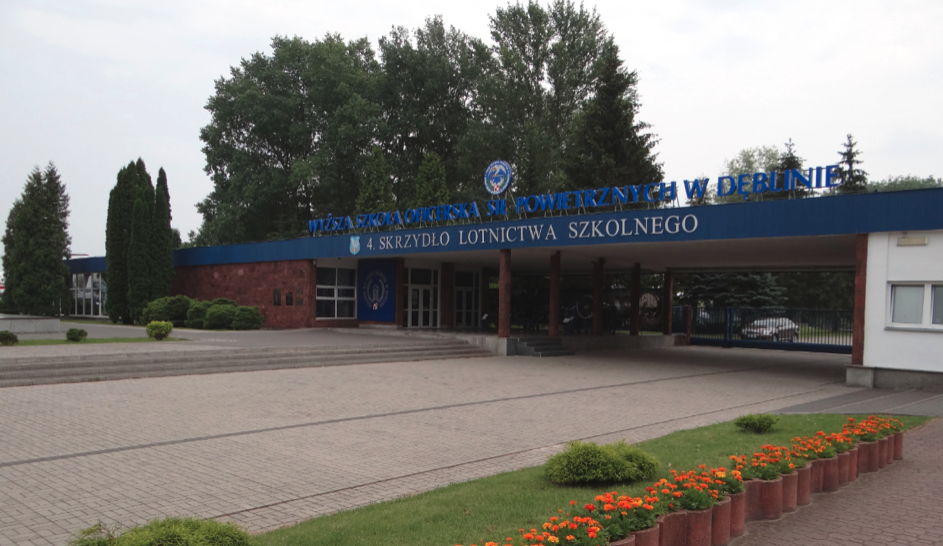
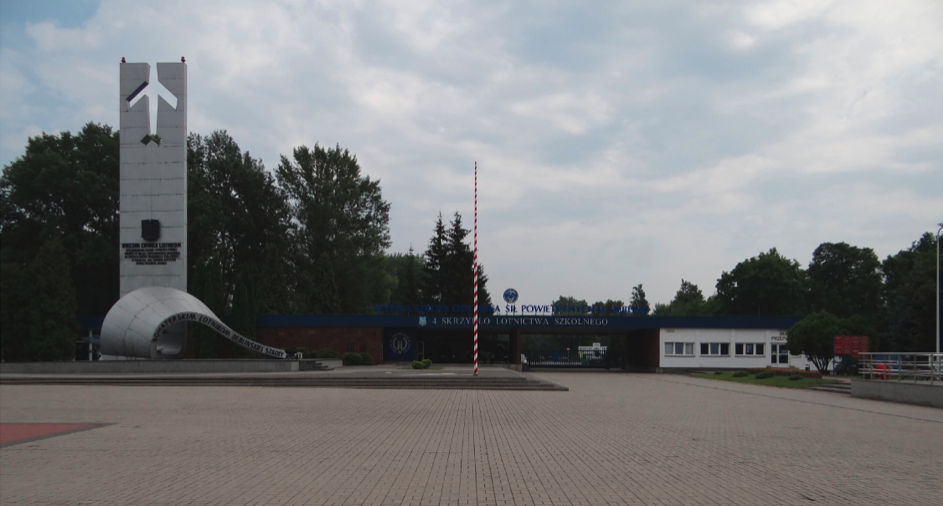
1975.
In the period 1968-1975, the school noted a particularly dynamic development. And not only organizational, but also infrastructure. Many new facilities were built. Among them, the Center for Physical Education and Preparation for Flights. The building of the Training Department was rebuilt. The dormitories were expanded. A new casino was put into use. Typical airport facilities were also built. A new radar and lighting system was launched.
In 1975, the 24th School Helicopter Squadron (JW. 5060) was established in Dęblin. The squadron's task was to train helicopter pilots in practice. The basic type was the Mi-2 helicopter, which was mass-produced in Świdnik. The squadron was disbanded in 1979, and the helicopter training was transferred to the airport in Nowe Miasto on the Pilica.
1979.
In 1979, the Aviation Excellence Center (CDL) was established as part of the school. It was a return to the former Aviation Training Center operating at Modlin Airport at the turn of the 1950s and 1960s. The task of the CDL was to improve the qualifications of aviation personnel. Officer's courses of various specialties and levels were organized at the CDL. Among others; Higher Training Course for Officers, Training Course for Officers, Officers Retraining Course. In the 70-years, there were three training entities on airplanes at the School:
1 58. LPSzB on jet planes, SB-Lim (two squadrons) and TS-11 Iskra (one squadron).
2 23. Squadron on transport planes. Cadet cadets and foreign students were trained on An-2 and Ił-14 airplanes. Ultimately, training for An-2 planes. The training for An-2 was carried out in Podlodowo.
3 23. Squadron on helicopters. The main helicopter was the SM-1, which was decommissioned in 1983. The training was carried out in Ułęż.
Pilots of jet aircraft, helicopters, ground navigators, flying navigators, staff officers and political officers were trained.
Political officers were trained to be guidance navigators. Of course, to a lesser extent. In the third and fourth years, in the spring, they underwent practical training at the RSL and PPN posts, in the regiments subordinate to the WOSL. In their fourth year, they also underwent navigation training on "navigational" An-2 and Ił-14 airplanes. Both types were equipped with navigation stations. There were six positions in An-2, and as many as 12 in Il-14.
1980.
For 70 years, pilots from neighboring countries have been acquiring knowledge at the School. Over 200 pilots from countries such as Syria, Iraq, Libya and Algeria have been trained in Dęblin. These pilots flew most of their flights within the framework of the 58th LPSzk. The 58th LPSzk regiment in 1981 and 1982 exceeded 9,000 hours of flight time, which was a great achievement. In the following years, 8,000 flying hours were always exceeded.
In 1980, the Mniszchów-Jabłonowski Palace in Dęblin underwent a major renovation, during which it was completely renovated. During the works, the polychrome in the ground floor rooms and the barrel vault in the basement were revealed. After the fire in the ballroom in 1981, it was rebuilt and the details were reconstructed. Currently, the palace and park complex consists of a palace facing north, preceded by two outbuildings, a garden pavilion, a guardhouse situated at the corner of a new fence, a gardener's house, officers' villas and the remains of a park stretching towards the Wieprz Valley. The palace is a brick, basement, two-storey, plastered building covered with a hipped roof made of copper sheet. It was built on an elongated rectangular plan. From the west, it is extended by a one-story wing equal to the width of the body, housing the ballroom, i.e. the former theater hall. The outbuildings are brick, two-storey, plastered buildings with basements, covered with hipped roofs made of copper sheet. They were erected on a rectangular plan in the mid-nineteenth century. The whole is complemented by an English-style park. Apart from the monumental oaks, limes, elms, exotic cork trees and a pond with an island, which can be accessed via an overhung, brick, single-arcaded bridge, have survived there to this day. Unfortunately, none of the characteristic structures of such an assumption have survived. Another renovation of the palace was carried out in 2009-2011.
Undoubtedly, the 70-years of the 20th century was the peak period of the development of the School of Eaglets. A lot was educated and very well. The young officers leaving the walls of the School were specialists of the highest class. They had excellent substantive and practical preparation. Compared to other soldiers from the Warsaw Pact, they were clearly better. They were perfectly able to use Soviet equipment to the limit of its capabilities.
There were entrance exams at the Eaglets' School. In the field of jet airplane pilot, the candidate passed an exam in mathematics (written and oral), introductory studies in social studies - oral exam, foreign language (Russian) - written, physical fitness test, and had to complete a six-week course in Aviation Military Preparation. There was a written exam in Polish and a foreign language (Ruthenian) in the field of political officer. Oral exam in history and introduction to social science. However, the most important was the pro-Soviet attitude. Aero-medical examinations were conducted for candidates from January of a given year at the Institute of Aviation Medicine. After the examinations, the medical commission issued a declaration of fitness for military service and a declaration of fitness to study in the field of military aviation training. It happened that the candidate received a certificate of fitness for military service, but not at the School of the Eaglets. At that time, another military university was recommended, where the health requirements were lower.
At the School of Eaglets, specialist training was obtained by aviation engineers, navigational engineers and political officers. The latter are specialists in proving the superiority of communism over capitalism. The training period was four years. Graduates of the university served in the aviation of the Armed Forces of the Polish People's Republic: the Air Force, the National Air Defense Forces and in the Navy. Along with graduating from the university, graduates received an engineer diploma and the 3rd class of a military pilot. Further aviation training was already carried out in line units, where the pilot gradually increased his qualifications and was able to reach a master class. After a two-year period of service, with an officer degree, a graduate of WOSL could continue his education at other military and civil universities, improving his general military qualifications.
The pilot-engineer officer received a monthly salary (salary) in the amount depending on the military rank, the position held, the number of years and the class of the pilot. He received a business flat for himself and his family, and a whole complex of social benefits to maintain a good standard of living. Among them were trips to military resorts for an officer and his family at preferential prices.
Studies began around September 15 of a given year. After the initial military training, taking the military oath and matriculation, the listener obtained the title of cadet. The first three semesters concerned general education subjects: mathematics, physics, electronics, technical mechanics, computer science. In the second semester, typical aviation subjects were taught: aerodynamics, flight mechanics, navigation, flight safety regulations, air traffic organization. In the following semesters there were: aviation equipment, communications, airframe construction, engines, weapons. There were also typical military items: tactics, reconnaissance of foreign troops. The first examination session concerned only theoretical knowledge. The second year of education was perfecting typically military subjects. At that time, preparations for the start of flights on PZL TS-11 Iskra aircraft took place. There was training on PZL TS-11 Iskra simulators, which were then called imitators. All pre-take-off, take-off, flight and landing procedures were dry-practiced in an authentic aircraft cabin. Necessary habits were developed in the cockpit of this airplane. All this was ground preparation for future flights. Practical training on these airplanes was carried out in the fourth semester. Initially, the apprentice cadet flew with the instructor. The first elements were to keep the PZL TS-11 Iskra aircraft in the direction and in level flight. Then the ascent and descent, turns, take-off and landing. After proper preparation, mastering the plane, performing the statutory series of flights, the instructor decided to allow the cadet to fly independently. In the winter, the cadets returned to the lecture halls to learn about the next Lim-2 and Lim-5 airplanes, on which they later flew. Tactical training, that is, the use of a combat aircraft in combat, took more and more time. In addition, the cadets were trained in high-altitude rescue. The fourth year of training was intended for the improvement of aviation techniques: pair flights at low and high altitude, flights in formation, fighter attacks, ground attack attacks, flights in difficult weather conditions and at night. The most gifted were merged into a separate group of cadets and trained with a richer course of study. They already received the 2nd class of military pilot, instead of the 3rd class. There was no practical training on MiG-21 U planes in Dęblin. This aircraft was introduced to the officer in a linear unit.
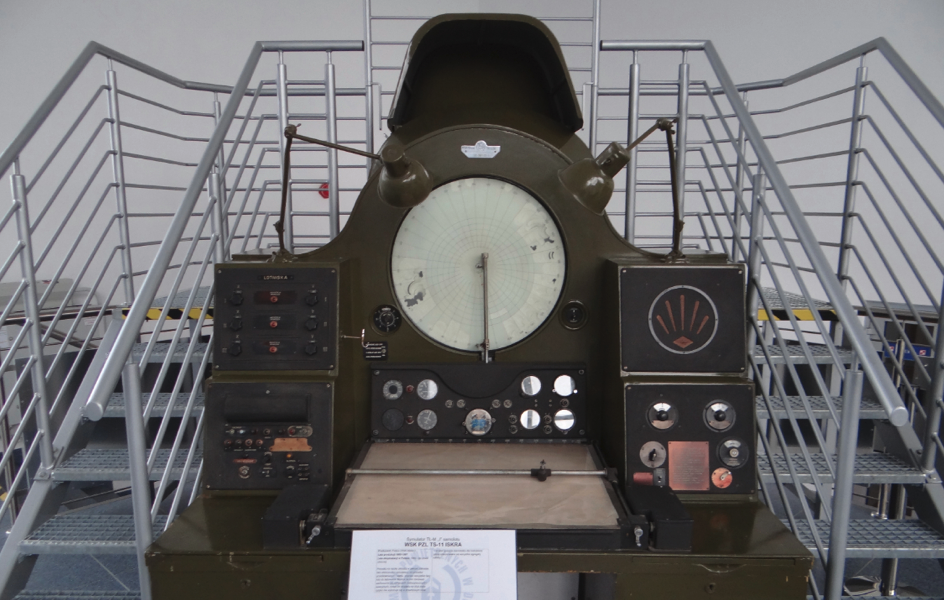
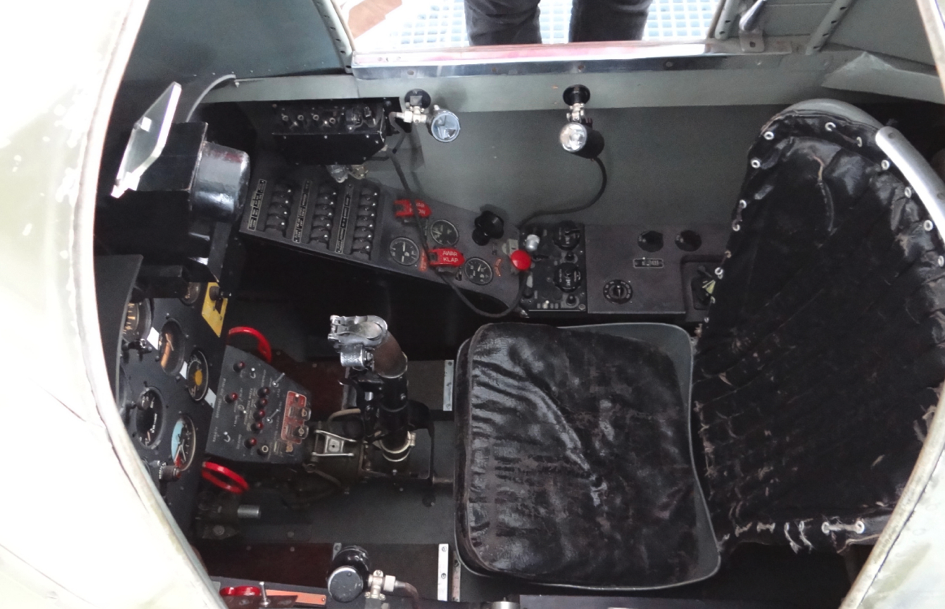
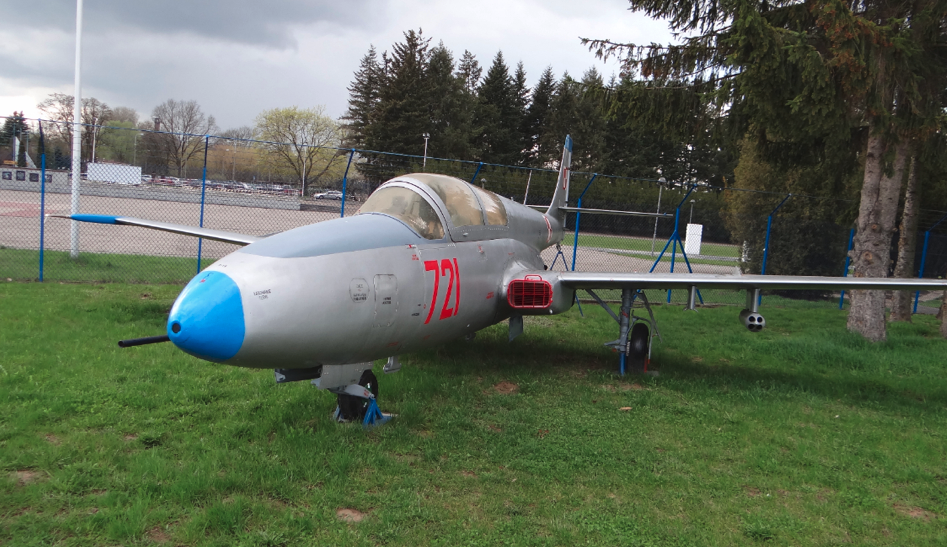
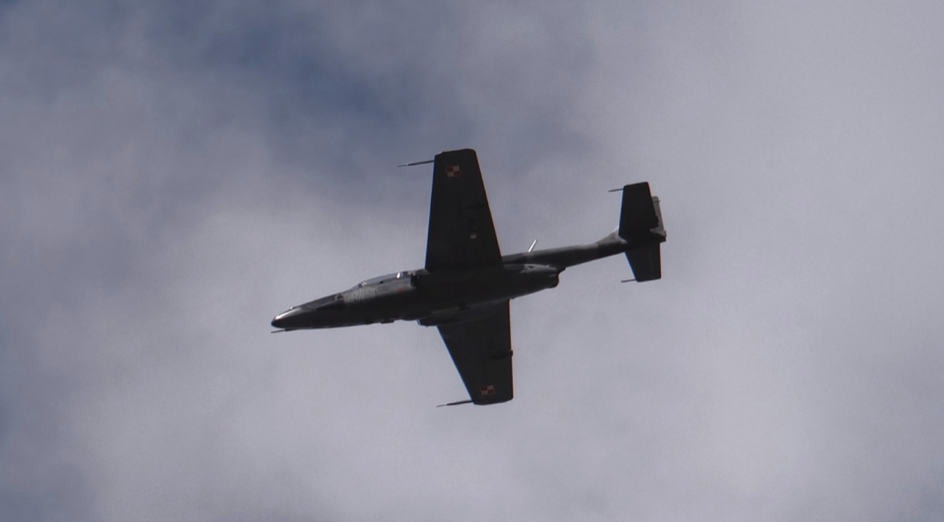
Oleśnica Śląska.
1970.
The school, under the name of the General Władysław Wróblewski Air Force Officers' School, functioned until 1970. She trained a total of 20 524 graduates, officers and ensigns.
During the next reform (1970) of the Polish Military Education, the center in Oleśnica was transformed into the Central Training Center for Technical Specialists of the Air Force. The tasks of the school have not changed significantly. It still educated mainly middle-class technical staff for the needs of the air force. There were also training courses for officers and non-commissioned officers all the time. The school in Oleśnica, as the only one in Poland, specializes in training the operation of military turbojet aircraft. (With the exception of the initial period. The school in Zamość trained helicopter mechanics). 1972. In 1972, the 1st School Automobile Regiment (JW. 3604) was established in Oleśnica. The regiment was organized on the basis of the previously existing Automobile Training Center. The new unit was located in the barracks at Wojska Polskiego Street, in the so-called Red Barracks. This unit took care of the primary school No. 3 and the Vocational School Complex.
1973.
From June 15, 1946, graduates of the School had the right to wear the Aircraft Mechanic Badge; an officer - gold, non-commissioned officers - silver. From 1973, graduates of the ensign school were granted the right to wear the gold badge. The TOSWL badge is a metal, enamelled red diamond. In its upper part there is an eagle without a crown, below the inscription TOSWL. The badge was worn on the upper right pocket of the dress uniform.
1974.
In 1974, Poland was equipped with the first combat aircraft with variable wing geometry. These were Su-20 fighter-bombers. During this time, machines with variable airfoil geometry were being developed all over the world. In 1979, we purchased MiG-23 MF / UB fighters (also with variable geometry), and in 1984, the Su-22 M4K / UM3K fighter-bombers (Su-20 development). With time, single copies of these machines were sent to Oleśnica as teaching aids.
1984.
In 1984, the school began training helicopter mechanics; Mi-2, Mi-4, Mi-8.
School in Zamość.
1970.
Around 1970, the training of Mi-2 and Mi-8 helicopter mechanics began in Zamość. Both of these types entered the Polish Military Aviation at about the same time. However, the Polish industry started the production of the Mi-2 on a large scale. This machine has become a workhorse among helicopters in Poland, and not only in the army. Also in; militia, sanitary service, aeroclubs, agricultural aviation, forest and maritime service. The helicopter was also used by state-owned enterprises as a crane or as an element to control power networks or pipelines. A large number of these machines required the training of hundreds of mechanics of various specialties. Mainly the operation of helicopter engines and transmission gears. During this period, training of mechanics of the excellent TS-11 Iskra training aircraft was also introduced.
1975.
At the beginning of the 1970s, the Soviets sold a large number of airplanes and helicopters to countries outside the Warsaw Pact. However, they themselves were not able to train a large number of airmen and ground personnel, so they outsourced some of the training to other countries of the communist camp, including Poland. In the years 1975-1993, technical personnel for the military aviation of India, Libya, Algeria and Burma were trained in Zamość. At that time, the TSWL commander was: Col. Nav. Dionizy Barszczewski, and then Col. Zygmunt Olejniczak.
1976.
In order to learn to pilot or practice parachuting in the People's Republic of Poland, one had to join the flying club. There was no such thing in Zamość. The closest one was in Lublin. A chance to create an aero club in Zamość was the administrative reform of the country (1975) and the creation of the Zamojskie Voivodeship. The procedures took place on January 1, 1976. It was on this date that the president of the Main Board of the Polish Aero Club of the People's Republic of Poland (the equivalent of the current Main Board of the Polish Aero Club), Brigadier General Władysław Jagiełło established the Zamość Aero Club. Location Zamość - Mokre. The first director of the Zamość Region Aero Club was Jerzy Rachwał, the parachute instructor Kazimierz Drzewiński, and Józef Kopański the tutor of the aeroclub on behalf of TSWL. The seat of the aeroclub was located in a small, furnished room of the fire station in the village of Mokre. Thanks to the favor of the TSWL command, it was possible to use the school's airport, also located in Mokre, but a condition was imposed. Aero club training could not hinder or interfere with military training. It is for this reason that civilian enthusiasts of sky travel could use the airport very early in the morning or in the evening, when the training military teams have not yet left or have already returned to the barracks. However, so that there would be no ambiguities and misunderstandings between the TSWL command and the flying club, on March 18, 1976, an appropriate agreement was concluded between the Air Force Command and the Polish People's Republic Aero Club. Under this agreement, 2 hectares of space were allocated at the airport for the construction of future - unfortunately not permanent - hangars and appropriate technical facilities, also possible to be dismantled quickly. Such were the realities then. We must also remember that almost the entire board of the Polish Aero Club are former military men. Until 1994, AZZ was co-operating the Zamość Airport together with the School.
1977.
In 1974, heavy combat helicopters of the Mi-24 type were introduced into the service of the Polish Aviation. Therefore, at the end of 1977, training for mechanics of these machines began in Zamość. Mainly in the field of armaments and on-board equipment.
Schools - Aviation high schools.
More and more modern aviation technology required specialists of a much higher class than before. The four-year period of study turned out to be too short for a good mastery of it. Therefore, it was decided that future candidates for universities should be prepared already at the secondary school level. The establishment of the General Aviation High School at the university in Dęblin turned out to be a perfect solution.
The idea of establishing the Aviation High School was born in the 70 years. The main purpose of the school's operation was to professionally prepare candidates for the Higher Officer Aviation School. Brig. General pil. dr hab. Józef Kowalski, who at that time was the Commander of the Military Army in Dęblin, after receiving the consent of the Ministry of National Defense to establish an experimental school (letter from the Chief of the General Staff of the Polish Armed Forces of August 3, 1972), by order No. 39 of September 3, 1972, he established the Aviation High School (08-521 Dęblin) . Just nine days later, on September 11, 1972, eighty-nine students split into three classes and began classes. The first seat of the school was the building of the Mniszchów-Jabłonowski Palace, which housed classrooms, a boarding school and a canteen. The teaching staff, headed by the director, Colonel Kazimierz Gorzelnicki, were officers - experienced academic teachers of WOSL.
A joint ordinance of the Ministers of Education and National Defense of August 17, 1973 defined the legal status of the school (a four-year vocational high school teaching in the specialization of "aircraft accessories mechanic") as well as the main goals of its operation (shaping motivation to serve in aviation, targeting aviation interests and equipping graduates with general knowledge necessary to start studies at WOSL). The Eagles Aero Club, established in the spring of 1973, became the institution supporting didactic and educational activities of the Aviation High School, which in July 1973 organized the first parachute and gliding camp for students.
In 1974, the school, the Aviation High School, received a new didactic building and a boarding house. Students, whose number increased to around five hundred in the 1975/1976 school year, were uniformed. On September 17, 1981, the school received a banner and the name of Franciszek Żwirka and Stanisław Wigura. The result of the growing interest in the Liceum was the establishment of a branch of the Aviation Liceum in Zielona Góra on September 1, 1979. After three years, the branch gained the status of an independent educational institution. (ul. Kisielińska 18 65-247 Zielona Góra).
Candidates for high schools had to have Polish citizenship, have completed 8 years of primary school, have not exceeded the age of 16, appropriate physical and mental abilities, which guaranteed admission to service in the aviation in the future, confirmed by aeronautical medical examinations. They had a written consent of their parents or legal guardians to take up high school education, they submitted a confirmation of the commitment signed by their parents that after graduating from high school, they would join WOSL as a candidate for a professional soldier. If the state of health does not allow for taking up military aviation training, they will choose another officer school or a school for ensigns, or they will start working in the aviation industry. In another case, they were required to reimburse the cost of attending high school. Expulsion from high school was also associated with the reimbursement of tuition fees. Candidates had to have an impeccable opinion issued by a primary school. Generally, documents were submitted by April 15 of each year. The first documents included an application for admission to the school, a handwritten CV, opinions from the school, a grade 7 certificate. The primary school leaving certificate was attached in June. There were also physical tests: 1000 m running and swimming. The candidate was referred for examination by a military medical commission.
Those admitted to the aviation high school spent one whole month in a military training camp in the field of defense training. The next vacation was also busy: apprenticeship in aviation plants, training in parachute, glider and piston airplanes. All courses and training were at the expense of the Polish Army. High school education lasted 4 years. The leading subjects were: Polish language, mathematics, physics, electrical engineering and specialist subjects: air navigation, airframe construction, engine construction, aviation equipment and radio devices. The Ruthenian language was also obligatory. The high school ended with passing the matura exam and receiving a certificate entitling to start higher education. Some classes issued diplomas as a mechanic for aircraft accessories or airborne equipment.
In 1983, students were relocated to a modern boarding house, and a year later, the Lyceum was provided with a spacious didactic building, which was its seat until the end of the 2001/2002 school year. The dynamic development of the Aviation Lyceum in the years 1985-1997 resulted in 1992 in the transformation of the school from the Vocational Lyceum into the General Aviation Liceum with a mathematical and physical profile, as well as the creation of modern classrooms (including IT, English, biology, chemistry). The high school had a very modern teaching base and a good group of lecturers. Graduating from high school did not guarantee admission to the WOSL. Likewise, not graduating from it did not close the road to WOSL.
Written by Karol Placha Hetman
